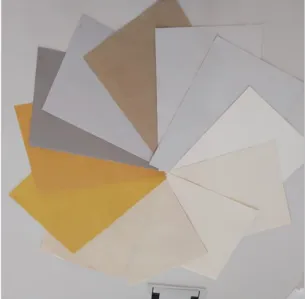- Home
- Melamine Decorative Paper: Integration of Decorative and Functional Features
May . 20, 2025 14:23 Ad album
Melamine Decorative Paper: Integration of Decorative and Functional Features
Melamine Decorative Paper, As a widely used surface decoration material in furniture, interior decoration, and other industrial fields, it plays an increasingly important role in modern society with its excellent performance and diverse designs. It not only gives the product a beautiful appearance, but also enhances its durability and functionality, becoming an indispensable part of modern manufacturing.

Production process of Melamine Decorative Paper
The production process of melamine impregnated decorative paper is relatively complex. Firstly, the special paper is immersed in a melamine resin solution and dried and cured under strict temperature and pressure control. This process endows paper with excellent physical and chemical properties, making it resistant to wear, heat, water, solvents, and stains. These features enable Melamine Decorative Paper to effectively protect the substrate surface from external environmental erosion, extend the product's lifespan, and reduce maintenance costs.
Melamine Decorative Paper also performs well in decorative aspects
The continuous advancement of modern printing technology enables decor charta to present a variety of textures, patterns, and colors. From realistic wood and stone patterns to fashionable solid colors and abstract patterns, designers can choose suitable decorative paper according to different needs, giving products a unique appearance style and meeting the aesthetic needs of different consumers. In addition, Melamine Decorative Paper can also be surface treated, such as embossed, matte, high gloss, etc., to further enrich its visual effects and tactile experience.
Melamine Decorative Paper has a wide range of applications
In the field of furniture manufacturing, it is widely used for surface decoration of substrates such as particleboard and density board, creating various styles of furniture such as wardrobes, bookcases, cabinets, etc. In the field of interior decoration, melamine charta gravidata is often used for surface decoration of wall panels, floors, ceilings, etc., to create a comfortable and beautiful living environment. In addition, Melamine Decorative Paper has also been applied in fields such as automotive interiors and electronic product casings.
Although Melamine Decorative Paper has many advantages, there are also some challenges
For example, environmental issues in its production process need to be taken seriously. Melamine resin may release harmful substances such as formaldehyde during the curing process. Therefore, enterprises need to adopt environmentally friendly resins and advanced production processes to reduce the impact on the environment and human health. In addition, there is still room for improvement in the scratch resistance of Melamine Decorative Paper, and further research and development of higher performance surface treatment technologies are needed.
In summary, decorat basi charta, as a surface decorative material that combines decoration and functionality, plays an important role in modern manufacturing. With the continuous advancement of technology and the increasing awareness of environmental protection, Melamine Decorative Paper will develop towards a more environmentally friendly, durable, and aesthetically pleasing direction in the future, bringing more convenience and beauty to people's lives.
Melamine Decorative Paper FAQs
What is Melamine Decorative Paper?
Melamine Decorative Paper is a surface decorative material made by impregnating decorative base paper with melamine resin. After high-temperature and high-pressure lamination, a wear-resistant and heat-resistant decorative layer can be formed, which is widely used for surface veneering of furniture, flooring, cabinets, and other items.
What are the main applications of Melamine Decorative Paper?
Panel furniture: decorative panels for wardrobes, desks, and cabinets.
Reinforced wood flooring: as a surface wear-resistant decorative layer.
Indoor decoration: used for walls, door panels, countertops, etc.
Commercial spaces: such as fire-resistant boards in hotels and offices.
What are the advantages of Melamine Decorative Paper compared to other decorative materials?
High wear resistance: High surface hardness, scratch resistance, suitable for high-frequency use scenarios.
High temperature resistance: can withstand a certain temperature (such as cigarette burns).
Diversified design: can print rich patterns such as wood grain, stone grain, solid color, etc.
Environmental friendliness: Low formaldehyde (compliant with E0E1 standard), superior to some PVC finishes.
Cost effectiveness: More economical than natural veneer or solid wood veneers.
What is the production process of Melamine Decorative Paper?
- Base paper dipping: Dip the decorative base paper into melamine formaldehyde resin.
- Drying: Remove the solvent to form a semi cured state (pre impregnated adhesive paper).
- Laminated pressing: Press with substrate (such as MDF, particleboard) at high temperature (180220 ° C) and high pressure (2030MPa).
- Post processing: cutting, quality inspection, some parts require UV coating to enhance wear resistance.
What is the current market trend for Melamine Decorative Paper?
Environmental upgrade: The development of formaldehyde free resin and water-based adhesive technology is rapidly advancing.
Digital printing: The demand for customized patterns in small batches is increasing (such as imitation marble and metal effects).
High performance requirements: Special decorative papers such as antibacterial, anti fingerprint, and high gloss are favored.
Emerging markets: Southeast Asia and the Middle East have seen demand driven by the expansion of furniture manufacturing.
Tardus nuntius
-
White Contact Paper for Cabinets – Transform Your Kitchen
NewsJun.13,2025
-
Duplex Board Paper: Properties and Manufacturing Process
NewsJun.13,2025
-
Food Packaging Solutions: Why Duplex Board is a Top Choice
NewsJun.13,2025
-
Best Types of Furniture Decoration Paper
NewsJun.13,2025
-
What Are the Best Adhesives for Applying Furniture Decoration Paper?
NewsJun.09,2025
-
Key Properties and Uses of Duplex Board Paper in Packaging
NewsJun.09,2025

